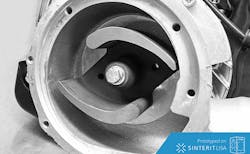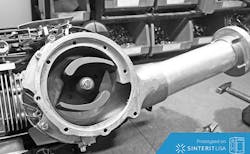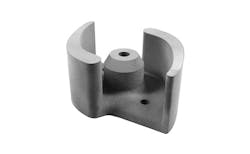Firefighters need high-quality equipment they can depend on, especially on the eve of wildfire season. Fast and effective water flow is essential. Here's the story of how 3D printing and Selective Laser Sintering technology helped redesign the water pump rotor three times faster than in the usual prototyping process.
A few days ago the officials of Los Padres National Forest in California announced that the largest wildfire in the state's modern history is officially out, more than six months after it started in December 2017. But with the last three years being extremely hot, 2018 seems to be the warmest. Meteorologists expect severe weather, and the wildfire season usually began at the beginning of June, it's high time to be prepared.
It's no secret that natural disasters can bring great damage. Especially dangerous ones like conflagrations or wildfires can cause injuries, burns, trauma or even death not only for human beings but also for the animals that live in forests. They can also lead to reducing the amount and deterioration of the quality of natural resources. Wildfire also generates costs. According to Forest Research Institute, direct losses per 1 ha of an area can cost up to $5000. Moreover, indirect (ecological) losses are estimated to reach even $25,000.
Water Pump Optimization to Save More Lives
Since 1970 the development of firefighting equipment has sped up. Thanks to advanced technology, rescue teams are now safer, can operate in a more dangerous environment, and reach more fire victims. But water and its proper flow is still the most critical part of any action. Every detail of the pump must be correctly designed and produced.
Rescue and Fire Fighting Units are often using floating pumps while coping with wildfires. They can also be used by individuals to pump significant amounts of water, as much as 1200 dm3 per minute. It is necessary to optimize the pump's operations, primarily by correlating its operating characteristics (like pressure and efficiency) with an engine operation (power, engine speed, etc.).
To cope with this optimization challenge it was essential to redesign the shape of the rotor blades of the pump. In the typical prototype process, constructors had to go through eight successive stages, which included both 2D documentation and the subsequent execution of the casting and its processing. Switching to 3D printing helped to reduce the number of processes needed to only two, which are: the implementation of the 3D model, and execution of the product (3d printing) by omitting machining, polishing, as well as drilling and tapping holes, which significantly accelerates the production process of the element.
Time Matters
In this case, the acceleration of the technological process of rotor production by 30 percent was tremendous. Limiting the number of activities performed from 8 to 2 stages, assurance of the high precision of the print, and no need for extra post-production processes makes Sinterit Lisa an excellent choice for the pump producer. Not to mention that if the designed shape needed to change, it would be fast and easy to make this change in 3D software.
SLS 3D Printing Accelerates the Process
Printing parts on Sinterit Lisa 3D printer which operates in the SLS (Selective Laser Sintering) 3D printing technology helped to reach the goal. The printed element got the regular surface and thanks to the isotropic properties of SLS powder as well as its mechanical parameters it was ideal to provide real-life tests and confirm the final shape of the pump - says Konrad Głowacki, one of the Sinterit Co-founders.















